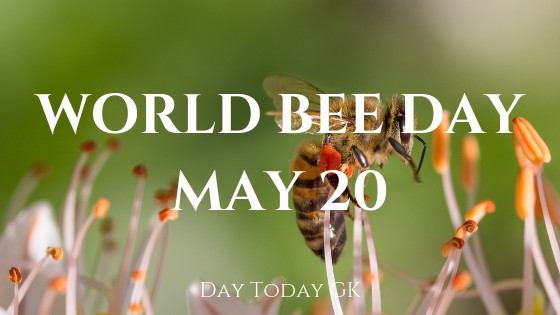
World Bee Day
World Bee Day is observed on May 20 every year. Bees and other pollinators, such as butterflies, bats and hummingbirds, are increasingly under threat from human activities. Pollinators allow many plants, including many food crops, to reproduce. Not only do pollinators contribute directly to food security, but they are key to conserving biodiversity – a cornerstone of the Sustainable Development Goals.
Invasive insects, pesticides, land-use change and monocropping practices may reduce available nutrients and pose threats to bee colonies. To raise awareness of the importance of pollinators, the threats they face and their contribution to sustainable development, the UN designated 20 May as World Bee Day.
Why May 20?
20 May coincides with the birthday of Anton Janša, who in the 18th century pioneered modern beekeeping techniques in his native Slovenia and praised the bees for their ability to work so hard, while needing so little attention.
Facts about Bees
- Bees have been producing honey for at least 150 million years.
- Bees use their antennae to smell. They can detect nectar 2km away.
- On one flight from the hive to collect honey, a honey bee will visit between 50 and 100 flowers.
- A bee must visit about four million flowers to produce 1kg of honey.
- One beehive of honey bees can produce up to 150kg of honey per year.
- Worker bees produce about 1/12th of a teaspoon of honey in their lifetimes.
Did You Know?
What is Apiculture?
- Apiculture is the science of beekeeping. Humans have collected honey from wild bee hives for more than 8,000 years, as shown in Mesolithic rock paintings dating from 6000 B. C. E.
- By 2500 B. C. E. , Egyptians were keeping bees in artificial hives. Hives exploit the honeybees’ natural tendency to build nests in cavities, and allow apiculturalists to easily move (via boat, wagon, truck) and manipulate bee colonies.
- This mobility has allowed beekeepers to introduce honeybees around the world: The first hives were brought to the New World in the 1620s by European settlers.










